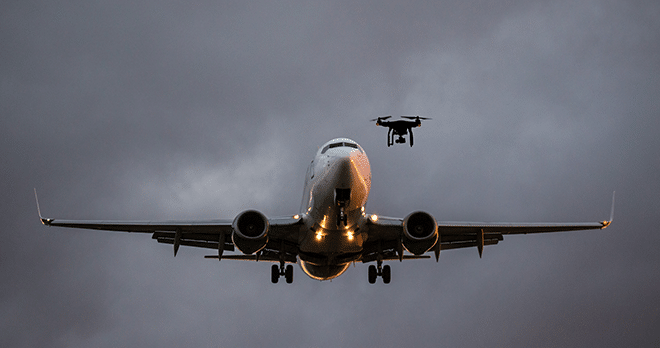Drones cause major disruption at UK airport

Clearly the situation could have been much worse, and we have to be thankful that there was no harm caused to people or property, but the incident highlights the deficiencies in regulation and control of airborne drones and, in particular, their use near to controlled, or sensitive, airspace.
The Transport Minister, Baroness Sugg, acknowledged this morning that counter drone technology is nowhere near advanced enough to counter such an incident. She announced that there would be ongoing consultations with the Police and Security Services in the New Year with a view to improving such technology. Clearly this has to be a priority if we are to be in a position to prevent, or at least minimise the impact of such incidents in the future. However we know that Vodafone have recently been piloting new software to thwart the use of rogue drones that are too small for radar, in the same way that air-traffic control tracks planes - could we see this technology come to the forefront of commercial or general drone security?
At the present time it is far from clear whether this was a malicious act intended to cause physical damage or loss of life, but it was almost certainly intended to cause disruption and commercial harm. This further highlights the fact that current regulation, which looks to punish offenders after the event, is wholly unsuitable to control such actions, and we need to act far more quickly to develop technologies that will counter malicious drone use, particularly near such vulnerable and sensitive locations.
With such a fact moving technology this will not be an easy task, but the cat is out of the bag now in terms of the availability of airborne drones, and the technology that surrounds their further development, and regulation, as well as counter drone technology, now has to move to the top of the list if we are to maintain confidence in the safety of our airports and air travel generally.